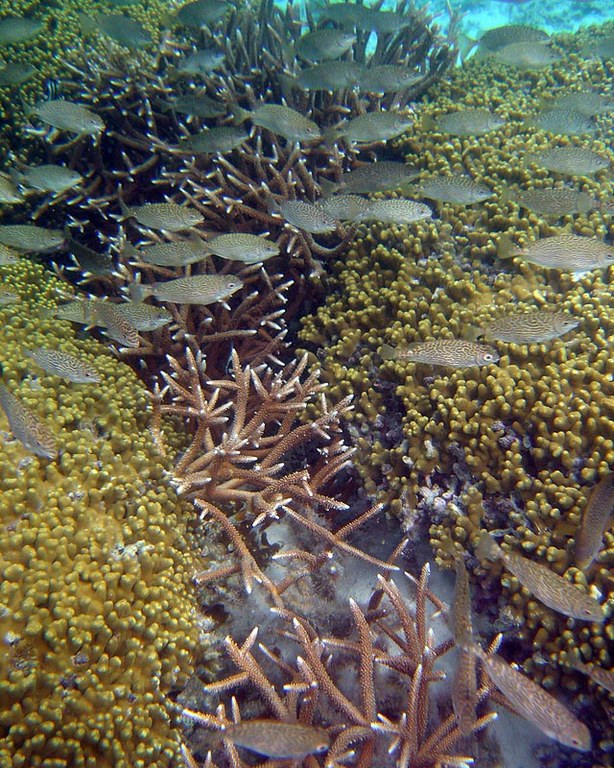News release by the University of Queensland
The cost of transforming the world’s energy systems to address rising carbon dioxide levels is little more than one-tenth of one per cent of growth in global gross domestic product per annum, according to a University of Queensland researcher.
UQ Global Change Institute Director Professor Ove Hoegh-Guldberg will discuss the cost at the International Coral Reef Symposium (www.icrs2012.com) at Cairns this week (July 9-13).
Professor Hoegh-Guldberg is the coordinating lead-author of the Oceans chapter in the next Intergovernmental Panel on Climate Change report.
He cites an IPCC analysis which shows that slowing global GDP growth by 0.12 per cent a year over the next 50 years will stabilise global temperature.
“That expenditure is the equivalent to taking off one year of GDP growth over the next 50 years,” Professor Hoegh-Guldberg said.
“It would enable atmospheric concentrations of carbon dioxide to stabilise at levels that will give coral reefs a chance.
“Without this action, they don’t stand a chance.
“It’s very clear that we have one last opportunity to make the changes that are needed to preserve this brilliant and economically important ecosystem on our planet.
“And the costs are minimal when they are aligned against the huge and impossible costs of trying to adapt ecosystems like coral reefs to the changes being inflicted on them.”
Rising sea surface temperatures, caused by increasing concentrations of greenhouse gases, including CO2, in the atmosphere, increase the likelihood of mass bleaching events which kill coral reefs.
Reef restoration methods – while effective at some local scales – are not economically-viable on a large scale, according to Professor Hoegh-Guldberg.
“To replant the Great Barrier Reef by planting fragments that cost $5 a piece to grow in the aquaculture facilities across 40,000 km² of the Great Barrier Reef would cost $200 billion,” Professor Hoegh-Guldberg said.
“If we then decided that we would want at least 20 different species within those communities, the cost would be $4,000 billion. The numbers are quickly astronomical and impossible.”
Professor Hoegh-Guldberg said as the situation now stood, modelling for the upcoming fifth assessment report of the IPCC showed that under most scenarios coral reefs were in extreme peril from warming oceans.
He said as temperatures increased, so would the frequency of ‘killer’ coral events.
“Considering that coral communities take at least 10 to 20 years to recover – having a mass bleaching event every two to three years is essentially to admit that those coral communities no longer survive and recover,” he said.
Further information:
Professor Ove Hoegh-Guldberg
Director
UQ Global Change Institute
Tel. +61 (0) 401 106 604
Mark Paterson
Communications Director
About the Global Change Institute (www.gci.uq.edu.au)
Tel. +61 (0) 409 411 110
UQ Global Change Institute
The Global Change Institute at The University of Queensland, Australia, is a new source of game-changing research, ideas and advice for addressing the challenges of global change.
The Global Change Institute advances discovery, creates solutions and advocates changes to policies that respond to challenges presented by climate change, technological innovation and population change.











0 Comments